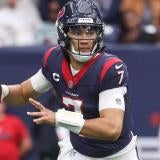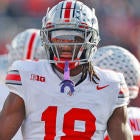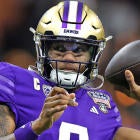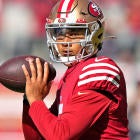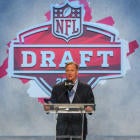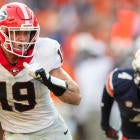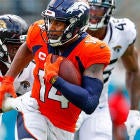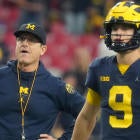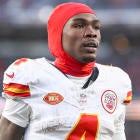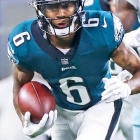PHOENIX -- The Dallas Cowboys were the only team to gain more than 400 yards against the Seattle Seahawks this season, a number that seems even more amazing now considering that only one team managed more than 300 yards in the final 11 regular-season games against that defense.
The Cowboys went to Seattle in Week 6 and pushed the Seahawks around, bullying the bully. Behind their powerful offensive line, a unit that is among the best in football, the Cowboys rushed for 162 yards en route to the 30-23 victory.
DeMarco Murray, who led the NFL in rushing, ran for 115 yards, but 51 of it came in the final eight minutes when Dallas was able to impose its will on the Seattle defense, something that rarely happens.
"We had a good game against them up front," Cowboys guard Zack Martin said.
As we ready for Super Bowl XLIX, featuring the Seahawks against the New England Patriots, I studied the Cowboys' plan of attack to see if it might offer a hint at what teams need to do against the Seahawks defense.
It helps when they aren't at full strength. Seattle wasn't that day. Bobby Wagner, the middle linebacker and key to their run defense, started that game but left because of a toe injury that would later sideline him for a month. Corner Byron Maxwell also left that game and safety Kam Chancellor, a big part of their secondary, was still not the same after offseason hip surgery. Nickel corner Jeremy Lane also didn't play.
That's not to make excuses. They did have defensive tackle Brandon Mebane, who won't be around for the Super Bowl, and he was a big part of their run defense.
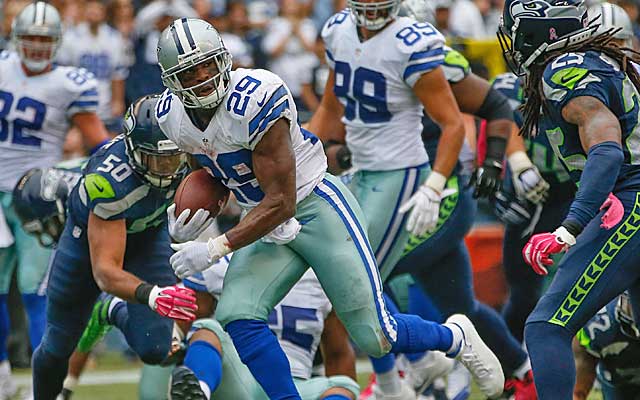
The Cowboys simply got the best of the Seahawks. They did it with a variety of runs, some timely throws by Tony Romo -- who threw for 250 yards and two scores -- and some check-downs to the backs for big plays.
To beat Seattle's defense, you need all of that, which is why that game is so important in gauging how to attack that unit, again first in the league in scoring and total defense.
For Dallas, it started with the running game. With that line -- with three first-round picks -- playing at a high level, it made sense to play power football. I am a big believer that the Seattle defense is so fast that running wide is not the way to go. You run it right at them, or block down and pull guys around to the outside to move the football. You can also use zone runs to use their speed and flow against them.
The Cowboys did both.
Here's a look at a run play that led to a big 38-yard gain for Joseph Randle because the Cowboys were able to use the Seahawks' speed against them.
Play: First-and-10 at Dallas 33, 5:33 left in the first quarter
Offense: Posse (3 WR, 1 TE, 1 RB)
Defense: Nickel -- Cover-3, single-high safety
The Seahawks slanted their front to the offensive left side as the run action went that way. The Cowboys zone-blocked it to the left and did a good job of getting a hat on a hat on each of the four defenders on the play side, even if left guard Ronald Leary got away with a nasty face-mask on Earl Thomas to help open the hole. It wasn't flagged, but it certainly should have been penalized, as you can see.
With the front side blocked, left tackle Doug Free and tight end Jason Witten did a great job of cutting off the back side to form the huge lane for Randle. Bobby Wagner was way out of position to have any chance to get in on the play and Kam Chancellor whiffed on his tackle. Flow is key for this defense, so this kind of play can give the offense an advantage. The problem is it's tough to block the back side because the Seahawks are so athletic.
"That's the thing with the zone game," Cowboys center Travis Frederick said. "You don't really game-plan where it's going. You try and get it going on the front side, but you can seal the back side and get big plays. With the way they run, especially their linebackers, that can work."
Another way the Cowboys had success was pulling guards and centers -- something the Patriots have done with great success, when they run it well. The key is sealing an edge, and then leading through with a pulling guard and a fullback to create a path. Here's a look at one of those plays, a 25-yard gain by Murray in the fourth quarter.
Play: First-and-10 at Seattle 47, 4:45 left in the fourth quarter
Offense: Tank (2 TE, 2 RB, 1 WR) -- Strong right
Defense: Eight-man front, single-high, man-to-man on receiver
The Cowboys ran power to the right on this play with Murray. The right side, including both tight ends, blocked down. Witten sealed the edge with a great block on Cliff Avril and Gavin Escobar got a good block on linebacker K.J. Wright. That allowed Martin to get around and block nickel corner Marcus Burley. Fullback Tyler Clutts led through the hole and got a good block on Chancellor, creating a huge hole for Murray.
"We ran that a couple of times with some success," Frederick said. "To run that, you have to get good down blocks. We did on that run."
There is also a theory you can run right at the Seahawks because they aren't big. The problem with that thinking is that Chancellor is usually lurking in the box, ready to make a play.
"When you cut it back, he's in there waiting," said Eagles guard Evan Mathis, who would know after Seattle limited the Eagles to 57 yards rushing in a 24-14 Seahawks win on Dec. 7. "That's like a linebacker. They aren't huge up front, but they are strong. And you can tell they are so well coached at what they do. They play it so well together."
In the passing game, Dallas used something San Diego had success with in Week 2, which were check-downs to the backs. With the way Seattle drops in their zone looks, they leave a lot of area open in the middle of the field. If you can block it, you can have success in there with short passes that can turn into big gains.
Here's a look at one of those plays, a 21-yard completion to Lance Dunbar out of the backfield on third-and-10.
The Seahawks dropped seven into coverage against the Cowboys' three-receiver, one tight end look. They played man with Richard Sherman on Dez Bryant at the top, with zone everywhere else. But Wright carried Witten into the deep middle, which really opened up the short pass for Randle. Malcolm Smith, playing with Wagner out and Wright moved to the middle, took a wide drop toward Bryant, which really helped the play. Romo patiently waited for Randle to circle out of the backfield and hit him for the big gain and the big first down.
This is something I would expect New England to try and use with Shane Vereen out of the backfield.
I also noticed Seattle doubled Witten a lot in this game, which means they will likely do some of that with Rob Gronkowski. That would be smart. When they doubled Witten in the red zone, Romo hit a wide-open Escobar behind it for a touchdown. So keep an eye on Tim Wright if they try and use that same type of look with Gronk inside of Wright.
The Seattle defense is good because they own what they do, which isn't a lot, and they do it well. That takes repping it over and over again. That doesn't mean it can't be beat.
In each of the two playoff games, Seattle has given up more than 300 yards. The Packers, even with a dinged-up Aaron Rodgers, moved the ball well on them. It's not easy, though, as their season numbers attest.
The Cowboys gave the blueprint, and they have the numbers to back it up, for what could work this week for the Patriots if they are to have success against the league's best defense.
You can't just dismiss a team that gained 400 yards on that defense. It means something.









